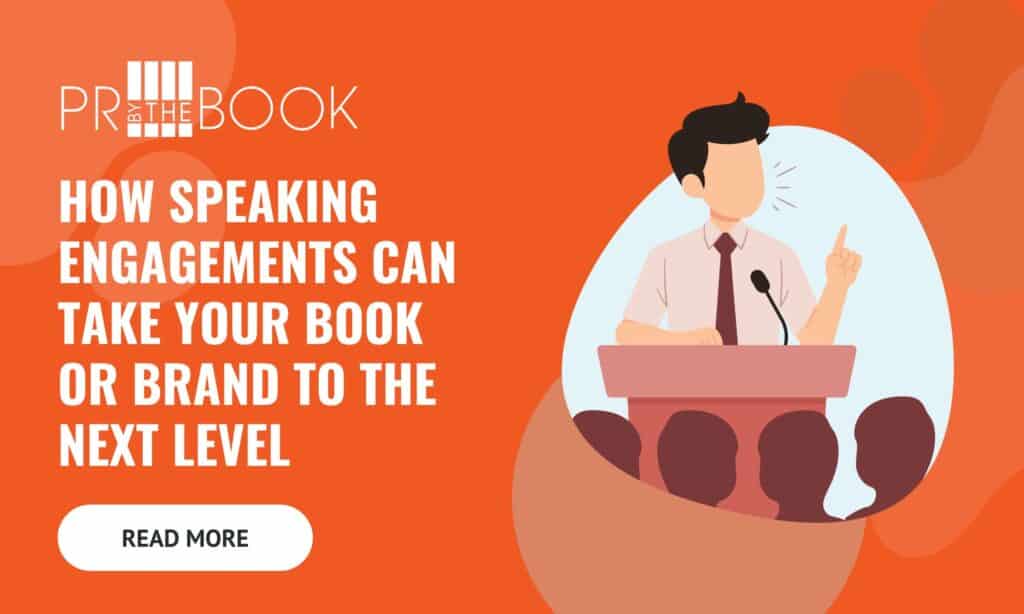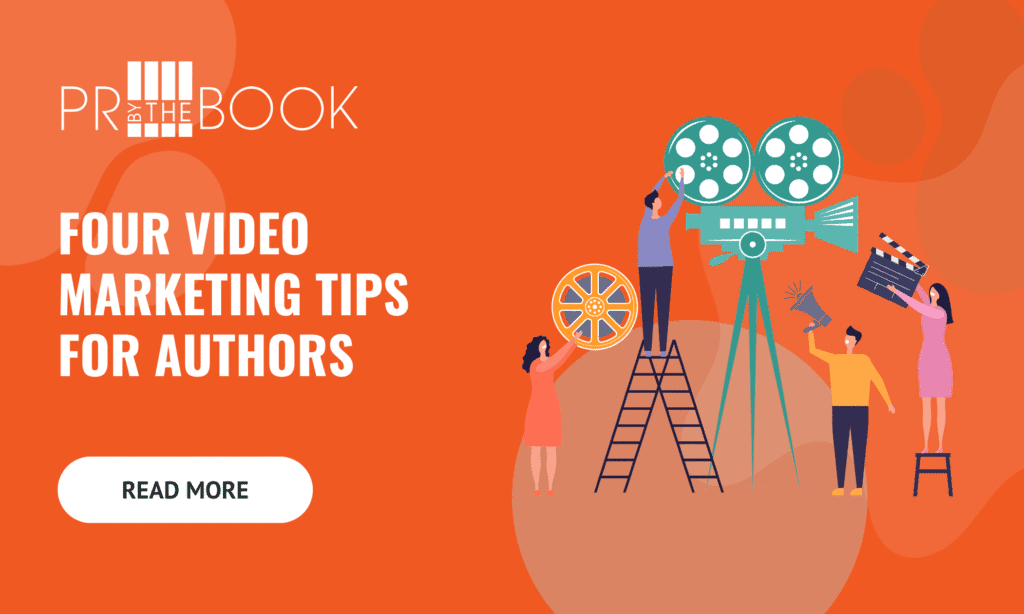25 Ways to Promote Your Book (or Brand) in 2025

Are you ready to hit the ball out of the park in 2025? In order to accurately publicize your book (or your brand), you need to create a roadmap; otherwise, how do you know if you’re on the right path and how will you know when you reach certain junctures in the journey? Here are a few ways you can map out your year ahead:
1. REALLY FIGURE OUT WHY YOU ARE WRITING (WROTE) A BOOK
Describe in detail (write it down) why you’re writing a book; what are your goals/ what do you hope to accomplish? The why helps guide the process from here on out. Are you ultimately trying to sell a product, idea, service? Is the book a lead generator? Are you trying to educate or help people? This will be used as your guiding light throughout the process.
2. IDENTIFY YOUR AUDIENCE
Who will be consuming your book/content? Where do they read about the subject? What social media platforms do they primarily use? Where do your customers consume news…blogs, social, online news sites? How old are they? Male/Female? Hobbies? What does your audience struggle with (what are their pain points)? What do you want from them? Just to buy the book? Follow your social media? Read your blog? The answers to these questions help define your path to success.
3. IDENTIFY YOUR COMPETITION
What other books are currently written on the subject you’re writing about? Read them. How many are there? Who is the audience for these books? Are they online/ do they still read print publications? What book covers do you like/ gravitate to? Why? Why is your book different? Why would someone read your book over the books that are already out there? Why would the media care- how is it different from what they’ve seen before? Will your book be distributed the same? Reverse engineer the marketing of these books, see what kind of marketing and PR was done for those books. How do the credentials of the authors of those books currently on the market differ from your background? What is the price of the books you’re competing against? Once you answer these questions, you will start to see trends and these indicators will begin to structure a pathway. Down the road, you’ll even research who covered these books and be able to reach out to these media outlets with a “If you liked x, you’ll like y…” type of approach. (It’s not just for Amazon!)
4. GET A WELL-BRANDED WEBSITE
Hire a professional (there are many out there) to build you a modern, clean website built with a clear brand message that tells your story well. You want your website to be simple enough that it doesn’t take an hour to scroll through and get the message. Journalists are busy people (like the rest of us). Once they see your pitch, one of the first things they’ll do is click on a link to your website. You want to WOW them! There are key elements you’ll want included in your website (such as a punchy bio, link to your social media pages, and a call to action) but most importantly, it needs to have a contemporary feel.
5. GET YOUR SOCIAL MEDIA SET UP
Set up social media platforms– you can never start too early–because it’s a game of acquisition and that takes time. Decide on two main platforms: Instagram, Facebook, Twitter, LinkedIn, Pinterest, etc. Create a contemporary, consistent look for your platforms and start acquiring followers/likes with content. Remember the 80/20 rule and only talk about your “stuff” 20% of the time. Engage in conversation with your audience to build a trusting relationship. Have a following in place when you have something important to say, i.e. “I wrote this amazing book and now it’s time to buy!”
6. START CREATING SOCIAL MEDIA CONTENT
Once your platforms are set up and look professional, now you must start the content creation machine. Yes, it can be overwhelming at first, so get organized. Google sleuth for an example of a content calendar and start creating posts, tweets, messages. Write for 1-2 hours at a time to create this content and you will appreciate it later. Capitalize on topics that are timely, awareness months, what’s in the news that relates to your book and add images.
7. SCHEDULE SOCIAL MEDIA POSTS
Now that you’ve got content written, look into the scheduling tool you’ll use to keep you ahead of the game. HootSuite is a popular one to start with. Get comfortable with it and it will be your best friend. You’ll want to locate images for each post (engagement goes up with a great image included). Just make sure you’re accessing free images for your post. Many a person has gotten into trouble using an image on their blog/ social that’s not free!
8. ENGAGE YOUR SOCIAL MEDIA FOLLOWERS
Your content has been posted, now what? Don’t post and run–be SOCIAL! After posting, engage with your audience. Spend time on your account liking and replying to comments. Cross promote your content on other social media channels. Like similar pages or readers who might be interested in your work. Engage with similar content on other channels. This will all in turn help to engage and amplify your content.
9. PLAN YOUR LAUNCH
Get a game plan together regarding events you want to schedule; marketing plans like reaching out to book clubs, or starting a newsletter. Make sure you have a clear strategy because you won’t know how to get there without a road map. Additionally, planning out your launch allows you to bite off small pieces at a time so you don’t get overwhelmed. You can assign yourself a few tasks per week leading up to the launch.
10. CREATE A LAUNCH EVENT
Create an event for your book launch party- even if it’s digital. It doesn’t always have to be at or with a bookstore. Are there other locations that make sense for your topic (i.e. perhaps use a children’s museum for a picture book). View this as a celebration for your local community; it’s close to home so you can invite friends and family, also. After it’s scheduled (plan 2-3 months out), you should work to get calendar listings to promote it (if it’s in person). These are typically found online so look for sites that cater to your local community. Create an event on Facebook and invite people to it. Get media attention for it (we’ll talk more about this later).
11. GALVANIZE YOUR TRIBE
Galvanize a tribe of friends and influencers online you can count on to help you spread the word via social media, post reviews on Amazon, tell their friends, host events, etc. Obtain blurbs, quotes, and reviews from this tribe early on in the process. Brainstorm a list of persons, reach out to them with an authentic “ask,” assuring them you’ll make it as easy and painless as possible to help you get the word out. Pull at their heartstrings by telling them the backstory of how you got to this point. Be specific in how they can help/ what’s required of them. And, create specific steps for them to help. You’ll even want to write sample social media content for them to utilize.
12. PLAN TO ENGAGE THE MEDIA
Brainstorm aspects to add in that are publicity related, i.e. location, characters, awareness months (August is Childhood Blindness Awareness Month), political stances, and other timely tie-ins. Are you able to promote your book leading up to May for Mental Health Awareness Month? What are your hooks and angles that will get the media’s attention? How will you rise above the noise? Remember, they’re getting dozens of pitches per day; what will make yours stand out?
13. WRITE PRESS MATERIALS
You’ll want one main press pack that contains all the vital information a media outlet will need. This will include a short synopsis of the book, a short and captivating bio, timely hooks, segment ideas (for radio and TV), links to your social media pages, website url, and further contact information. Assets like a great headshot and the book cover image are helpful, as well. This press pack will be your main press material. You’ll write individual pitches for different media outlets, depending on their focus. For instance, you’ll have a separate pitch (a pitch is really an email that serves as a “cover letter” of sorts to get their attention) for parenting outlets vs. a self-help publication. Other helpful press materials include a Q&A with you, the author, which can also be used as Sample Interview Questions.
14. REACH OUT TO LONG-LEAD MEDIA
Long lead media outlets need an advanced review copy (also called ARCs or galleys) at least 4-6 months prior to publication date. Most publishers will print 35-50 galleys and send out to a media list of approximately 25-30 media outlets. Other copies will be used to get blurbs, send to bookstores or influencers. Long-lead media outlets include: book trade magazines, print outlets that pertain to your topic such as women’s magazines or inflight magazines, and other top tier broadcast outlets like NPR.
15. SUBMIT TO BOOK AWARDS
In the competitive literary world, book awards offer validation, credibility, and increased visibility. Winning signifies recognition by experts, boosting an author’s confidence and attracting readers, agents, and publishers. Awards lead to marketing opportunities, expanding an author’s reach and opening doors to collaborations. They contribute to building a professional brand, attracting sales, and creating a ripple effect for future success. Beyond accolades, awards inspire new creative endeavors, making them powerful catalysts for an author’s ongoing success in the literary landscape.
16. FOLLOW UP
Plan to follow up on all of your outreach, from the galley mailing to reaching out to event planners for signings. It’s unrealistic to think folks will automatically get back to you. Most contacts require multiple follow ups to get an answer. Be consistent and thorough and it will pay off in the end.
17. GEAR UP TO REACH OUT TO SHORT-LEAD MEDIA
Short-lead outlets include your local and regional outlets, all online/ digital outlets, daily newspapers, radio and TV programs. Start a minimum of two months prior to publication date because there is a solid runway to take-off. It takes time to reach out to all appropriate outlets (remember, Rome wasn’t built in a day.) You’ll need to build media lists by purchasing resources/tools or good ole-fashioned Google research. This can be time-intensive so start this process early on. Reach out to journalists with individual pitches, letting them know why this is a fit for their particular audience. Again, remember that follow up!
18. CONSIDER A VIRTUAL BOOK TOUR
These can also be time intensive to organize but can really move the needle in exposure and buzz. The idea behind a VBT is to build a groundswell of digital chatter about your book the week of publication. Reach out to book bloggers, bookstagrammers (on Instagram), podcasters, people who review books on Amazon and Goodreads, and influencers who don’t charge for posts. Get them excited about your book, ask them to get on board, and assure them you’ll provide them with all the assets they’ll need. Ask them to commit to posting about your book on a particular day of that week.
19. HIRE A QUALITY MEDIA TRAINER
Hire a quality media trainer for a half day or one day workshop based on your project. You’ll be amazed at what he/she can come up with and pull out of you, in the way of soundbites and talking points. A wise ad man who was the first national bestseller I ever worked with in the late 1990s would say, “You can’t read the label from inside the bottle.” This is so true, especially when it comes to knowing just the right things to say and how to say them during a media interview. You should walk away with not only solid talking points and soundbites, but the confidence to slay any and all interviews.
20. PREPARE FOR INTERVIEWS
Quite a lot goes into being ready for media opportunities that come your way. Practice what your media trainer has taught you (there’s no shame in talking to yourself in the mirror or interviewing yourself in the car during your commute.) Also, prepare your calendar and schedule to make yourself available for interviews. Clear time so that you can be flexible. We have to work around the journalist’s schedule (not the other way around). You might need to organize your day in a different way so that you can work in an interview.
21. WRITE CONTRIBUTED ARTICLES
One of the back-door approaches in today’s media landscape is to offer written content. Many media organizations have cut back and trimmed down staff to the point that having content provided can make or break your chance of getting in the door for that exposure. Figure out a handful of appropriate topics and write to those timely aspects. If you have two to three short articles crafted (think 500-700 words), you can easily add on if needed or tweak the contribution for what’s needed.
22. MAINTAIN YOUR DIGITAL RELEVANCY
Stay up to date with your content, social posts, and keep moving forward so your message doesn’t “die on the vine.” You’ve spent so much time and effort to get to this point, maintain that momentum. Continue to extend your brand for the next big thing. You might be developing a speaking career, placing contributed articles/ listicles, serving as an expert on broadcast outlets, capitalizing on seasonality/ certain awareness months. You’ll need to be constantly developing ongoing social media content to consistently engage and grow your audience.
23. BUILD ON YOUR BRAND
The grind doesn’t stop – social media posts, guest posts, articles, following influencers to be a resource, plugging into new and growing groups on Facebook, LinkedIn or other online communities- it all matters. What are other projects to build off your first or most recent book? Using momentum/contacts for the next project is key. Keep up with the news and respond to timely happenings/ news stories that you can comment on.
24. SEEK OUT QUALIFIED CONTINUING EDUCATION
It’s why we developed the Author to Influencer Accelerator, an educational platform offering nearly 70 workshops to take one from preparation to promotion, at your own pace. Listen to the workshop, print off the handout and fill it out based on your project as your roadmap for that topic/ action item. Get involved in the private Facebook group to get media leads, hacks, tips, suggested articles, and over inspiration. Tune into the monthly Power Hours for free, built in consulting. And, if needed, use the member benefit of purchasing blocks of time for additional PR services.
25. EXPLORE AI TOOLS FOR CONTENT CREATION
AI tools like Perplexity or ChatGPT are invaluable for streamlining book promotion tasks. Use them to brainstorm creative ideas, draft engaging social media posts, or outline blogs, saving time and reducing stress. They can also help you craft press materials, optimize SEO for your website, or even edit promotional content for clarity and tone. By automating time-consuming tasks, AI frees you up to focus on high-level strategy and meaningful connections with readers. With the right approach, these tools become powerful allies in amplifying your book’s reach.
Learn even more tips and tricks about creating success and influence with our Author to Influencer Accelerator. Our unique program not only helps authors take advantage of DIY publicity opportunities but provides a supportive group of other authors and industry professionals to aid their success. The Accelerator is a proven five-step pathway that takes the pain out of promoting your book — and allows you to fly from Preparation to Promotion. Access over 60 workshops and join the private Facebook group!
Marika Flatt

4 Powerful Reasons to Enter Book Awards (and Win More Readers)
4 Powerful Reasons to Enter Book Awards (and Win More

How Speaking Engagements Can Take Your Book or Brand to the Next Level
How Speaking Engagements Can Take Your Book or Brand to

Four Video Marketing Tips For Authors
Four Video Marketing Tips For Authors SHARE Video has become

